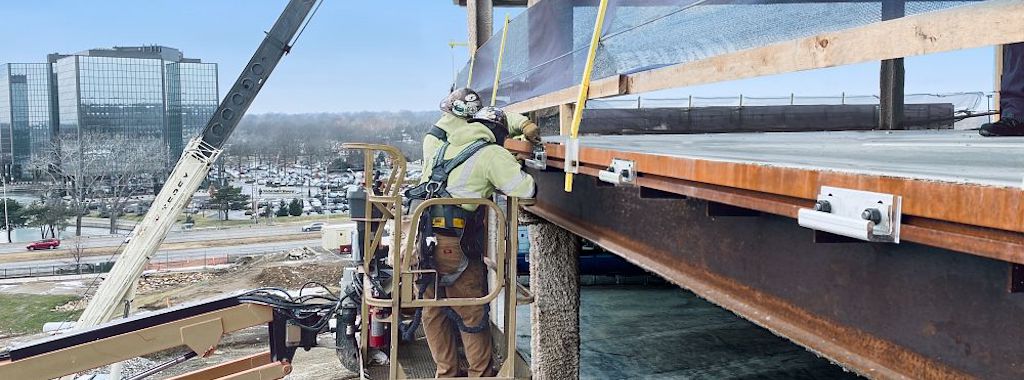On November 9, 2022, we hosted the second in a two-part series on the latest solutions for creating cladding connection designs for structural steel buildings. The second webinar provided a technical overview of the Edge-Tie system. Simpson Strong-Tie R&D engineers Abhishek Kulkarni and Fayad Rahman discussed the performance evaluation testing and design parameters for a façade attachment method that uses adjustable bolted connections without any field welding.
If you missed or would like to revisit the webinar, you can view it in the Simpson Strong-Tie Learning Center. During the November presentation, we received dozens of questions from our attendees. We’ve answered all those questions, and they’re now available in a pdf. In what follows, we highlight 10 of those questions.
Q: Other than glass curtain walls, what types of cladding systems can the Edge-Tie™ system be used with?
A: The Edge-Tie™ system can be used with masonry, cold-formed steel, and more. It’s very flexible and can be used with a range of façade systems. Please reference our detail sheet for more resources on applications that the Edge-Tie system can be used with.
Q: Is this reusable if the cladding design changes over time?
A: Yes. The Edge-Tie™ system allows for adaptive reuse and changes to the cladding design.
Q: Were these tests witnessed by an independent third party?
A: Yes. All testing was witnessed by an independent third party.
Q: How early on in the project does Simpson need to get involved to be able to detail this system in the drawings?
A: The earlier the better. There have been projects where the original design had specified a regular bent plate pour stop and the details that were made for a bent plate pour stop were modified for the Edge-Tie™ channel. It’s possible to do it late in the game; but the earlier we get involved, the smoother and quicker everything goes.
Q: Who is responsible for the design of the system? Is it the façade engineer or the engineer of record?
A: Both. The façade engineer might do the connection design, while the EOR might need to check the spandrel beam for any/additional torsional load.
Q: Can the calculation tool account for wind load reactions that act in both the vertical and horizontal directions simultaneously? For example, wind load reactions from a sloped façade?
A: Yes, you would input each component. In the tool, each of the components is individually added, so you would have to do your calculation and rotate your façade load to the correct axis and input it.
Q: What channel heights are available? Is a 6″ slab possible?
A: An additional pour stop plate can be welded to the top at the fabrication shop to accommodate different slab heights.
Q: Is there a minimum edge distance to the edge of the slab for T-bolts at the outside corner locations?
A: Yes. We specify a minimum of 2″. Please Refer to the Installation Details Sheet.
Q: What keeps the bolt from spinning during initial tightening?
A: The head of the bolt will lock into the channel slot to keep it from spinning during initial tightening.
Q: Does the safety rail system meet OSHA requirements for fall protection?
A: Yes, this has been tested for the OSHA requirement of a 200 lb. load and can be used for fall protection as long as you meet that criterion in your setup.


